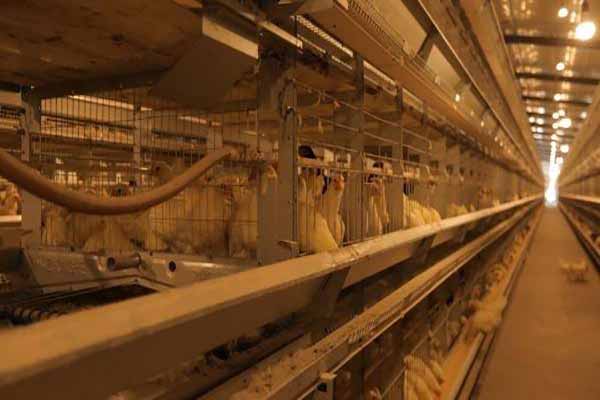Tanzania Chicken Farm Automation Management Plan: A Comprehensive Guide
Time : 2025-04-25
As the demand for poultry products continues to rise in Tanzania, chicken farming has become a lucrative business venture. However, with the growth of the industry comes the need for efficient management and automation to ensure productivity and profitability. In this article, we will delve into the intricacies of creating an automation management plan for a chicken farm in Tanzania. Let’s get started!
Understanding the Basics of Chicken Farming in Tanzania
Before we dive into the automation management plan, it’s essential to understand the basics of chicken farming in Tanzania. The country has a diverse range of climates, which makes it suitable for various chicken breeds. The most common breeds are the broiler, layer, and dual-purpose chickens.
Key Aspects of an Effective Management Plan
1. Farm Layout and Design
– Biosecurity: Implement strict biosecurity measures to prevent the introduction of diseases.
– Ventilation: Ensure proper ventilation to maintain optimal humidity and temperature levels.
– Flooring: Use non-slip, easy-to-clean flooring materials.
2. Feeding and Watering Systems
– Automated Feeding: Install automated feeders that dispense feed at predetermined intervals.
– Water Systems: Use automated watering systems to ensure a constant supply of fresh water.
3. Health and Welfare
– Vaccination Schedule: Develop a vaccination program to protect chickens from common diseases.
– Monitoring: Regularly monitor chickens for signs of illness or stress.
4. Automated Egg Collection
– Egg Collecting Robots: Implement egg-collecting robots to minimize manual labor and reduce the risk of breaking eggs.
Step-by-Step Automation Management Plan
1. Assessment of Current Farm Operations
– Evaluate your current farming practices, including labor, resources, and equipment.
– Identify areas that can be improved through automation.
2. Setting Objectives
– Define clear, measurable objectives for your automation plan, such as reducing labor costs or increasing productivity.
3. Technology Selection
– Research and select the appropriate automation technologies for your farm, such as automated feeders, waterers, and egg collection systems.
– Consider factors like cost, ease of installation, and compatibility with your farm’s existing infrastructure.
4. Implementation
– Develop a timeline for implementing the automation technologies.
– Train your staff on how to use the new equipment and systems.
5. Maintenance and Upkeep
– Establish a maintenance schedule for all automated equipment.
– Regularly check and service the equipment to ensure optimal performance.
6. Monitoring and Evaluation
– Monitor the performance of the automated systems and compare them to your objectives.
– Make adjustments as necessary to improve efficiency and effectiveness.
Benefits of Automation in Chicken Farming
1. Increased Productivity: Automation can significantly increase the output of your farm, allowing you to meet the growing demand for poultry products.
2. Cost Reduction: By automating certain tasks, you can reduce labor costs and improve overall efficiency.
3. Improved Health and Welfare: Automation can help create a more controlled environment for chickens, which can lead to better health and welfare.
4. Scalability: As your business grows, automation allows you to expand without a proportional increase in labor.
Conclusion
Creating an automation management plan for your chicken farm in Tanzania is a strategic move that can lead to increased productivity, reduced costs, and improved health and welfare for your chickens. By following the steps outlined in this article, you can develop a comprehensive plan that aligns with your farm’s goals and objectives.
Remember, automation is not just about technology; it’s about a holistic approach to farm management. By integrating automation with your existing practices, you can create a more efficient and profitable chicken farming operation.
Tags












